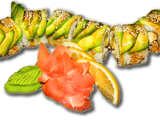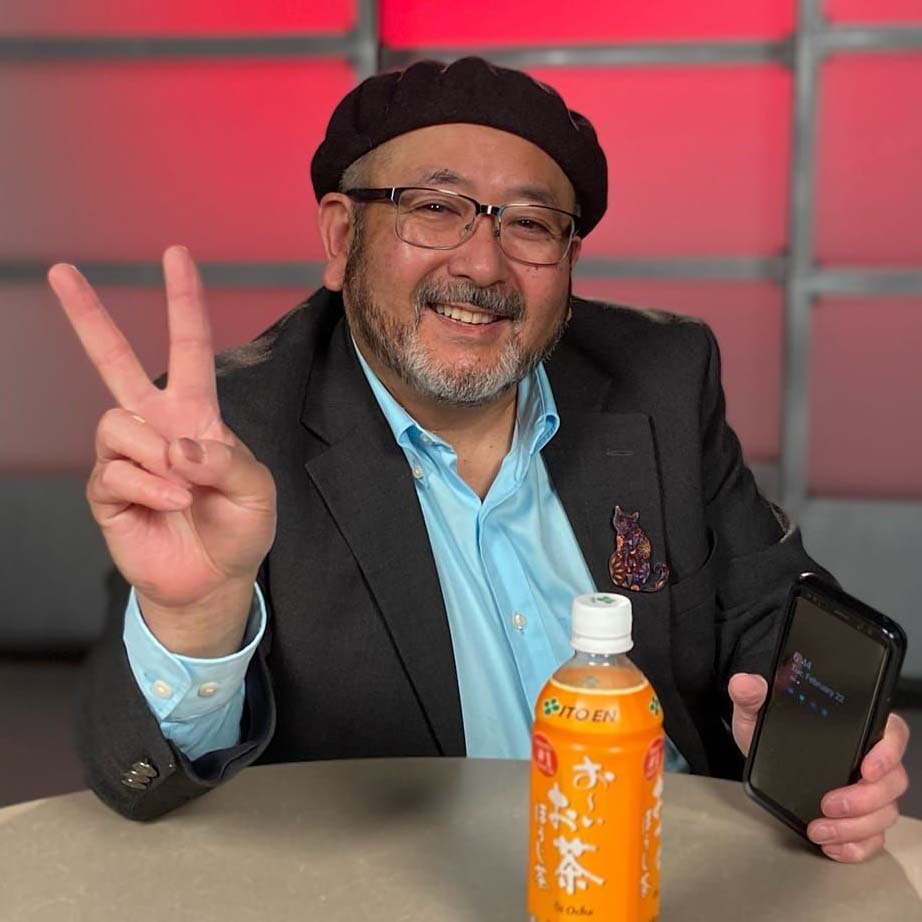en ja es pt

identity

The theme of the 11th edition of Nikkei Chronicles—Itadakimasu 3! Nikkei Food, Family, and Community—takes a look at several questions, such as: How does the food you eat connect your Nikkei community? What kinds of Nikkei recipes have been passed down from generation to generation? What is your favorite Japanese and/or Nikkei dish?
Discover Nikkei solicited stories related to Nikkei food from May to September 2022. Voting closed on October 31, 2022. We received 15 stories (8 English; 1 Japanese; 6 Spanish; and 1 Portuguese) from Brazil, Canada, Peru, and the United States, with one submitted in multiple languages.
Thank you very much to everyone who submitted their Itadakimasu 3! stories!
We asked our editorial committee to select their favorite stories. Our Nima-kai community also voted for the stories they enjoyed. Here are their selections!

Japanese-Brazilian Food: Japanese Cuisine with a Brazilian Touch
By Meiry Mayumi Onohara
English | Japanese | Spanish | Portuguese
English:

Food for Thought—TikTok & Tamagoyaki
By Kyra Karatsu
Comment from Gil Asakawa
I loved all the English entries for Itadakimasu 3! for different reasons. But my favorite of the submission is “Food for Thought—TikTok & Tamagoyaki,” an essay by Kyra Karatsu, a college journalism student that originally ran in The Rafu Shimpo back in June 2022. She’s a Japanese-German Yonsei who’s written a series of insightful stories for Discover Nikkei about her Japanese identity, family, culture, and history that are all worth reading and absorbing.
In this piece, Karatsu writes about her generation’s affinity for social media, and especially TikTok, which features videos that can go insanely viral. She notes she has only a few followers of her content, then explains her most viewed post is a one-minute video of she and her father making tamagoyaki, which received 2,000 views (puny by star content creator standards) but passionate comments from those viewers.
She acknowledges there ultimately were plenty of positive comments, but cites some of the negative sentiments and weaves her food essay with threads of the current wave of anti-Asian sentiment and writes, “The Internet breeds a new brand of malice—one that can be typed yet not uttered.”
Karatsu’s directness and clarity raise this piece about the joy of making tamagoyaki (and not particularly liking natto or sekihan) to a thought-provoking rumination on modern technology and social justice. She’ll have a fine career as a journalist and a cultural thinker, which is an exciting prospect for the Nikkei community.
For the record, though, I love sekihan and natto… and of course, tamagoyaki!
Japanese:

Intercultural Communication Through Sushi
By Keiko Fukuda
Comment from Masayuki Fukasawa
I once asked a chef, who had just come from Japan, for his opinion on the “creative” sushi that was popular in Brazil, and I was caught off guard by his blunt response: “I wouldn’t call it Japanese food. That’s food of the Pacific Rim.” So to me, this story doesn’t sound like something that happened in a foreign country. There is even a new type of sushi restaurant called “Temakeria” (one that specializes in hand rolls), which is not originally from Japan, and it was reported that Brazilians brought it to Italy.
Because there is no cold current flowing in the waters around Brazil, the fish they get for sushi have little fat, which is why they need to supplement with cream cheese or sauce to make it taste good. Given that they make sushi in a place where they have no access to the food that is used in Japan, of course they have to adapt.
What’s remarkable about this story is that it shows how the mind of an immigrant changes, when not only the local situations surrounding Japanese food but also different cultures get mixed, as new generations are born, and even older generations of people gradually come to accept the fusion.
Just like Japanese cuisine changes in foreign countries, people also change when they move to different places. On the other hand, having been away from Japan for over 20 years, living in a place where it’s not easy to make frequent visits back home, I often get overwhelmed by just how fast things change in my home country. I feel like I’m being left behind. I’ve come to realize that it’s not always the migrating one that changes.
Spanish:

Nantu, the Mochi of Uchina
By Roberto Oshiro Teruya
Comment from Javier García Wong-Kit
I chose this article because of its value from a historical, family, and scientific point of view. Through mochi, an essential element of Japanese and Nikkei cuisine, we’re able to understand the importance of food in the migration process, especially for the Japanese community in Latin America and its origins on Okinawa. I think we can learn a lot from this story, not only about Japan but also about what happens in Peru. It’s also an anecdote about how traditions unify the Nikkei community and the value of preserving traditional practices when starting a family enterprise like so many Nikkei businesses around the world.
Portuguese:

Japanese-Brazilian Food: Japanese Cuisine with a Brazilian Touch
By Meiry Mayumi Onohara
Comment from Telma Shiraishi
I loved Meiry’s account, talking about her memories—dishes and habits that were inherited from her family. What stands out is the fusion of recipes and ingredients that create new flavors while providing us with a good look at the history and family nucleus around this axis.
My favorite segment is the one in which she talks about the typically Brazilian beans that include Japanese seaweed in their recipe. Next time I prepare beans at home, I’ll be trying out this combination myself.
In addition to references to pop culture influences that have helped to increase interest in Japanese dishes, she goes through the unique combinations found in Brazilian sushi, with lots of freestyle in the reinterpretation of recipes that have traveled the world. Meiry also strolls through the diversity of Brazilian ingredients, many of which are cultivated by the Japanese in these lands and which allow for the great variety of new combinations.
The most affective memory involves the bento meals—the flavor of traveling and of memories of her Bachan are materialized in the little metal boxes. A taste of family and of a unique identity, forged between two worlds.
We have closed submissions for this series, but you can still share your story on Discover Nikkei. Please check our Journal submission guidelines to share your story!
We're deeply grateful for the participation of our Editorial Committee:
ENGLISH  Gil Asakawa is a journalist, editor, and expert on Japanese American and Asian American culture, history, and identity. He blogs at nikkeiview.com and is the author of Being Japanese American. His forthcoming book, Tabemasho! Let’s Eat! A Tasty History of Japanese Food in America will be published in August 2022.
Gil Asakawa is a journalist, editor, and expert on Japanese American and Asian American culture, history, and identity. He blogs at nikkeiview.com and is the author of Being Japanese American. His forthcoming book, Tabemasho! Let’s Eat! A Tasty History of Japanese Food in America will be published in August 2022.
JAPANESE
 Masayuki Fukasawa is a journalist and author covering the Japanese Brazilian community. His book, Parallel World, chronicles his experiences working with Brazilians at a factory in Oizumi-machi, Gunma Prefecture, Japan in 1995. It received the Ushio Nonfiction Award in 1999. He is the editor in chief of Diário Brasil Nippou in São Paulo, Brazil.
Masayuki Fukasawa is a journalist and author covering the Japanese Brazilian community. His book, Parallel World, chronicles his experiences working with Brazilians at a factory in Oizumi-machi, Gunma Prefecture, Japan in 1995. It received the Ushio Nonfiction Award in 1999. He is the editor in chief of Diário Brasil Nippou in São Paulo, Brazil.
SPANISH Javier García Wong-Kit is a journalist, professor, and director of Otros Tiempos magazine. Author of Tentaciones narrativas and De mis cuarenta, he writes for Kaikan, the magazine of the Japanese Peruvian Association.
Javier García Wong-Kit is a journalist, professor, and director of Otros Tiempos magazine. Author of Tentaciones narrativas and De mis cuarenta, he writes for Kaikan, the magazine of the Japanese Peruvian Association.
PORTUGUESE Telma Shiraishi is the head chef of Restaurante Aizomê, which crafts Japanese food with Brazilian and Japanese ingredients, and commands an Aizomê unit at the Japan House São Paulo. Her cuisine is based on a balanced combination between hot and cold recipes with authentically Japanese values, seasonal and local ingredients. Telma is also in charge of the kitchen at the Japanese Consulate in São Paulo, where she holds the title of Japanese Cuisine Goodwill Ambassador, which was granted by the Japanese Government through the Ministry of Agriculture, Forestry, and Fisheries. Telma is the first Brazilian professional and one of the few women in the world to receive the honor.
Telma Shiraishi is the head chef of Restaurante Aizomê, which crafts Japanese food with Brazilian and Japanese ingredients, and commands an Aizomê unit at the Japan House São Paulo. Her cuisine is based on a balanced combination between hot and cold recipes with authentically Japanese values, seasonal and local ingredients. Telma is also in charge of the kitchen at the Japanese Consulate in São Paulo, where she holds the title of Japanese Cuisine Goodwill Ambassador, which was granted by the Japanese Government through the Ministry of Agriculture, Forestry, and Fisheries. Telma is the first Brazilian professional and one of the few women in the world to receive the honor.
 The Asociación Peruano Japonesa (APJ—Peruvian Japanese Association) is a non-profit organization that represents the Peruvian Nikkei community and its institutions. Founded on November 3, 1917, APJ preserves the memory of Japanese immigrants and their descendants, develops cultural promotion and welfare assistance activities, and provides education and health services. APJ also promotes cultural, scientific and technological exchange between Peru and Japan, strengthening friendly relations between both countries.
The Asociación Peruano Japonesa (APJ—Peruvian Japanese Association) is a non-profit organization that represents the Peruvian Nikkei community and its institutions. Founded on November 3, 1917, APJ preserves the memory of Japanese immigrants and their descendants, develops cultural promotion and welfare assistance activities, and provides education and health services. APJ also promotes cultural, scientific and technological exchange between Peru and Japan, strengthening friendly relations between both countries.
 The Japanese Cultural and Community Center of Washington (JCCCW) was built in 1913 by Japanese immigrants as a community gathering place and Japanese language school. Founded in 1902, it is the oldest continuously operating Japanese language school in the continental U.S. The JCCCW features exhibits, classes, and activities to preserve and highlight Japanese and Japanese American history and culture.
The Japanese Cultural and Community Center of Washington (JCCCW) was built in 1913 by Japanese immigrants as a community gathering place and Japanese language school. Founded in 1902, it is the oldest continuously operating Japanese language school in the continental U.S. The JCCCW features exhibits, classes, and activities to preserve and highlight Japanese and Japanese American history and culture.
 JCI Brazil – Japan is a local São Paulo, Brazil chapter of Junior Chamber International (JCI), a non-profit organization of active citizens from all sectors of society who embrace new ideas, collaboration, and diversity. JCI members are concerned about the future of the world and are committed to making an impact in their communities.
JCI Brazil – Japan is a local São Paulo, Brazil chapter of Junior Chamber International (JCI), a non-profit organization of active citizens from all sectors of society who embrace new ideas, collaboration, and diversity. JCI members are concerned about the future of the world and are committed to making an impact in their communities.
 Nikkei National Museum and Cultural Centre’s (NNMCC) mission is to honor, preserve, and share Japanese culture and Japanese Canadian history and heritage for a better Canada. Since September 22, 2000, the cultural space has offered unique programming, exhibits, and events. The NNMCC’s collections include over 2,600 objects, 41,000 photographs, 38 meters of textual records, 650 oral history recordings, and 156 film reels of historically and culturally significant items. With the addition of family and community stories every year, the Nikkei National Museum and Cultural Centre ensures the legacies of people of Japanese ancestry in Canada live on into the future.
Nikkei National Museum and Cultural Centre’s (NNMCC) mission is to honor, preserve, and share Japanese culture and Japanese Canadian history and heritage for a better Canada. Since September 22, 2000, the cultural space has offered unique programming, exhibits, and events. The NNMCC’s collections include over 2,600 objects, 41,000 photographs, 38 meters of textual records, 650 oral history recordings, and 156 film reels of historically and culturally significant items. With the addition of family and community stories every year, the Nikkei National Museum and Cultural Centre ensures the legacies of people of Japanese ancestry in Canada live on into the future.
Thanks to Jay Horinouchi for designing our Itadakimasu 3! logo, and our wonderful volunteers and partners who help us review, edit, upload, and promote this project!
Disclaimer: By submitting your story, you are granting Discover Nikkei and the Japanese American National Museum permission to post your article and images on DiscoverNikkei.org, and potentially other publications in print or online affiliated with this project. This includes any translations of your work in association with Discover Nikkei. You, the writer, will retain copyright. Check Discover Nikkei’s Terms of Services and Privacy Policy for more details.